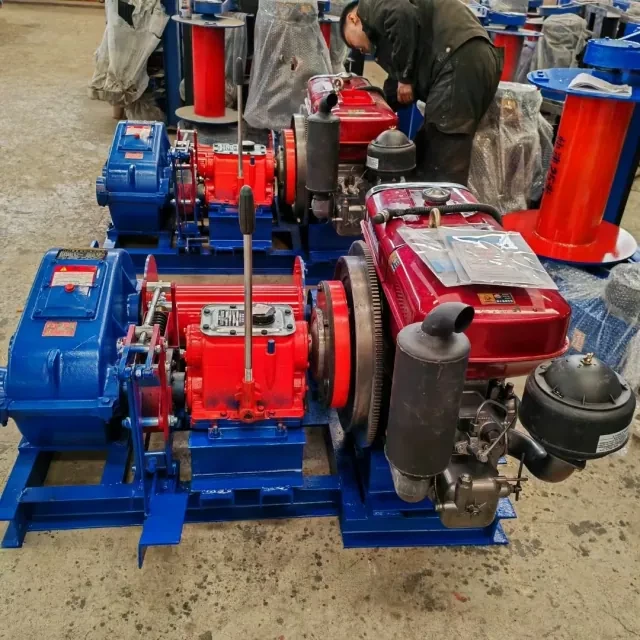Selecting the right hoist equipment isn’t just about lifting capacity—it’s about matching operational demands, safety standards, and industry-specific requirements. Whether you’re in construction, manufacturing, or logistics, this guide breaks down the critical factors to optimize performance, safety, and cost-efficiency.
Understanding Hoists and Their Industrial Scope
Hoists are the backbone of material handling across industries, but their designs vary dramatically based on application. Before comparing models, let’s clarify their core components and how they align with different sectors.
Defining Key Hoist Components and Classifications
Hoists consist of three primary systems:
- Lifting mechanism: Chains, wire ropes, or synthetic slings.
- Power source: Electric, pneumatic, or manual operation.
- Control system: Variable speeds, remote operation, or automated load sensing.
Did you know? Electric hoists dominate manufacturing due to their precision, while manual hoists remain popular in small workshops for their portability.
Industry-Specific Applications: From Construction to Manufacturing
- Construction: Heavy-duty wire rope hoists handle beams and prefab modules, often with explosion-proof features for hazardous sites.
- Automotive assembly: Compact electric chain hoists with dual-speed controls enable precise positioning of engines.
- Warehousing: Lightweight hoists with automated trolleys streamline high-frequency loading.
Critical Factors in Hoist Equipment Selection
Choosing a hoist isn’t a one-size-fits-all process. Prioritize these factors to avoid costly mismatches.
Load Capacity and Environmental Adaptability
- Dynamic vs. static loads: Account for acceleration forces—e.g., a 5-ton hoist might only safely lift 3.5 tons when moving at full speed.
- Environmental stressors: High-temperature facilities (like foundries) require heat-resistant motors, while marine sites need corrosion-proof coatings.
Ever wondered why some hoists fail prematurely? Over 60% of failures stem from environmental mismatches, not mechanical defects.
Safety Standards and Efficiency Metrics
- Non-negotiable safety features: Overload protection, emergency brakes, and fail-safe power-off systems.
- Energy efficiency: Regenerative braking in electric hoists can cut energy costs by up to 20% in high-cycle operations.
Pro Tip: Look for compliance with ISO 4309 (wire rope inspection) or ANSI/ASME B30.16 (overhead hoists) to ensure regulatory alignment.
Case Studies: Successful Hoist Deployments
Automotive Plant Efficiency Boost
A Midwest auto plant replaced manual hoists with Garlway’s electric chain hoists featuring dual-speed controls. Result: 30% faster assembly line cycles and zero load-dropping incidents over two years.
Shipyard Safety Transformation
A coastal shipyard adopted explosion-proof hoists with IP56-rated enclosures. Saltwater corrosion damage dropped by 75%, and maintenance intervals extended by 40%.
Key Takeaways and Actionable Steps
- Audit your needs: Map load weights, movement frequency, and environmental conditions before evaluating models.
- Prioritize safety: Insist on third-party certifications (CE, OSHA) and real-world testing data.
- Plan for longevity: Opt for hoists with modular designs—like Garlway’s winch systems—to simplify part replacements.
Final thought: The right hoist isn’t just a tool; it’s a productivity multiplier. By aligning equipment with operational realities, you’ll reduce downtime, enhance safety, and future-proof your investments.
Related Products
- Electric Hoist Winch Boat Anchor Windlass for Marine Applications
- Commercial Construction Mixer Machine for Soil Cement Mixing Concrete
- Portable Concrete Mixer Machine Equipment for Mixing Concrete
- Ready Mixer Machine for Construction Ready Mix Machinery
- Hydraulic Concrete Mixer Machine Cement Mixing Equipment for Mixture Concrete
Related Articles
- How Boat Anchor Winches Prevent Injuries and Enhance Marine Safety
- How Proper Lubrication Checks Prevent Electric Hoist Failures and Boost Efficiency
- How Electric Winch Components Dictate Performance and Durability
- Why Boat Anchor Winches Earn "Best Accessory" Status: A Deep Dive into User Satisfaction Drivers
- How Industry-Specific Electric Winch Configurations Boost Efficiency and Safety








